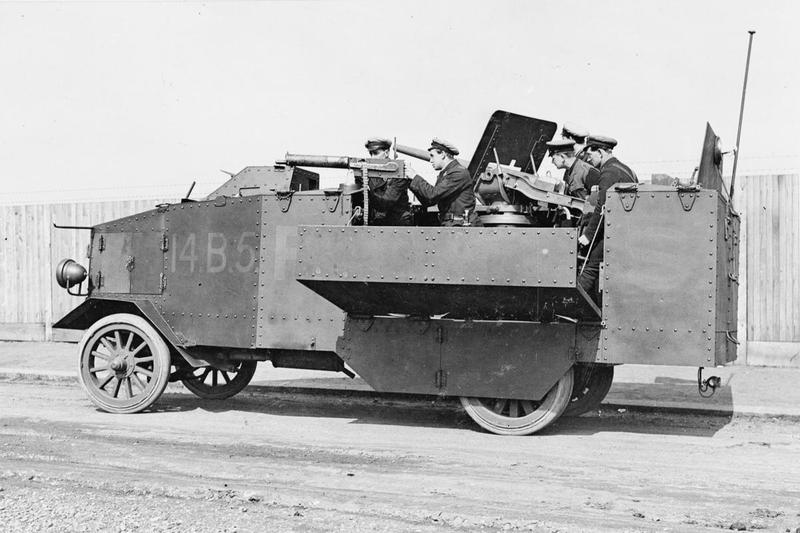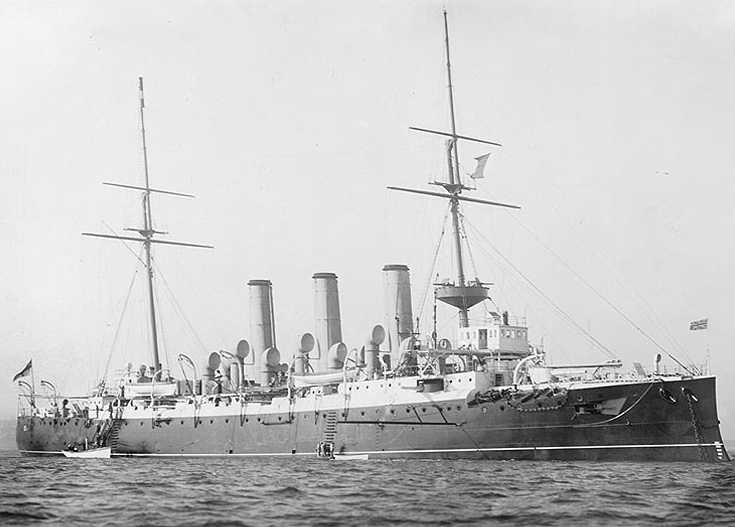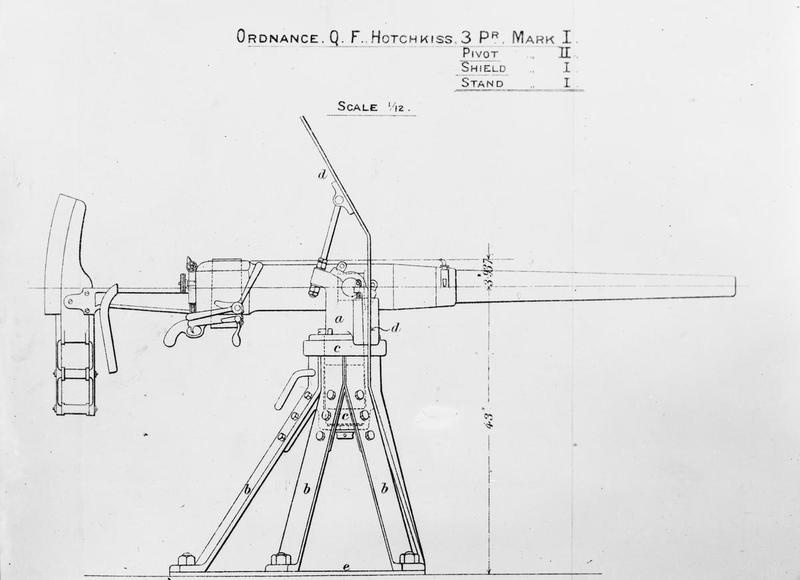Hotchkiss 3-pdr guns were introduced in 1886 for locations where the 6-pdr gun was considered to be too heavy. Used as anti-torpedo boat guns on most small cruisers built prior to World War I. As did other nations, the British found that these small-caliber projectiles were too light to be effective and many guns were converted following World War I to sub-caliber training and saluting guns. This last use meant that a number of these guns survived until World War II when they were converted back to shooting guns and used on MLs and other minor auxiliary warships. An approximate total of 2,950 of these guns were in naval service, with about 1,950 of these still available in 1939.
Mark I was of monobloc construction while the Mark II was a built-up design. Almost all surviving guns in 1939 were Mark I.
| Designation | Hotchkiss 3-pdr (1.4 kg) [1.85"/40 (47 mm)] QF Marks I and II |
|---|---|
| Ship Class Used On | Many |
| Date Of Design | about 1885 |
| Date In Service | 1886 |
| Gun Weight | 528 lbs. (240 kg) |
| Gun Length oa | 80.6 in (2.048 m) |
| Bore Length | 74.1 in (1.881 m) |
| Rifling Length | N/A |
| Grooves | N/A |
| Lands | N/A |
| Twist | N/A |
| Chamber Volume | 43 in3 (0.705 dm3) |
| Rate Of Fire | 20 rounds per minute |
| Type | Fixed |
|---|---|
| Weight of Complete Round | HE: 5.7 lbs. (2.6 kg) |
| Projectile Types and Weights | HE: 3.3 lbs. (1.5 kg) |
| Bursting Charge | N/A |
| Projectile Length | N/A Complete Round: 21.4 in (54.2 cm) |
| Propellant Charge | World War I: 0.54 lbs. (0.24 kg) MD World War II: 0.465 lbs. (0.211 kg) HSCT 134-055 World War II: 0.602 lbs. (0.273 kg) NF 029 |
| Muzzle Velocity |
|
| Working Pressure | N/A |
| Approximate Barrel Life | about 6,000 rounds |
| Ammunition stowage per gun | Monitors of World War I carried 300 rounds per gun 1 |
- ^During World War II, outfits were all HE, although some common rounds were used during the early part of the war. Flashless was issued in the latter part of the war.
| Elevation | Distance |
|---|---|
| 20.7 degrees | 6,500 yards (5,944 m) |
| 45 degrees | 7,900 yards (7,200 m) |
| Maximum AA Ceiling | about 10,000 feet (3,000 m) |
| Effective AA Range | about 1,200 yards (1,100 m) |
| Designation | Single LA Mountings: Mark I and Mark I* 1a Single HA Mountings: Mark IV HA 1a, Mark V HA and Mark VI HA 2a3a |
|---|---|
| Weight | 0.7 tons (0.8 mt) |
| Elevation | Marks I and I*: -5 / +25 degrees 4a Mark IV: N/A Mark V: -5 / +70 degrees Mark VI: -5 / +60 degrees |
| Elevation Rate | Manually operated, only |
| Train | 360 degrees |
| Train Rate | Manually operated, only |
| Gun recoil | N/A |
Data from:
- "Big Gun Monitors: The History of the Design, Construction and Operation of the Royal Navy's Monitors" by Ian Buxton
- "Naval Weapons of World War Two" by John Campbell
- 27 February 2007
- Benchmark
- 12 February 2012
- Updated to latest template
- 15 December 2013
- Added photograph of 3-pdr on a lorry
- 23 September 2014
- Added 3-pdr sketch



